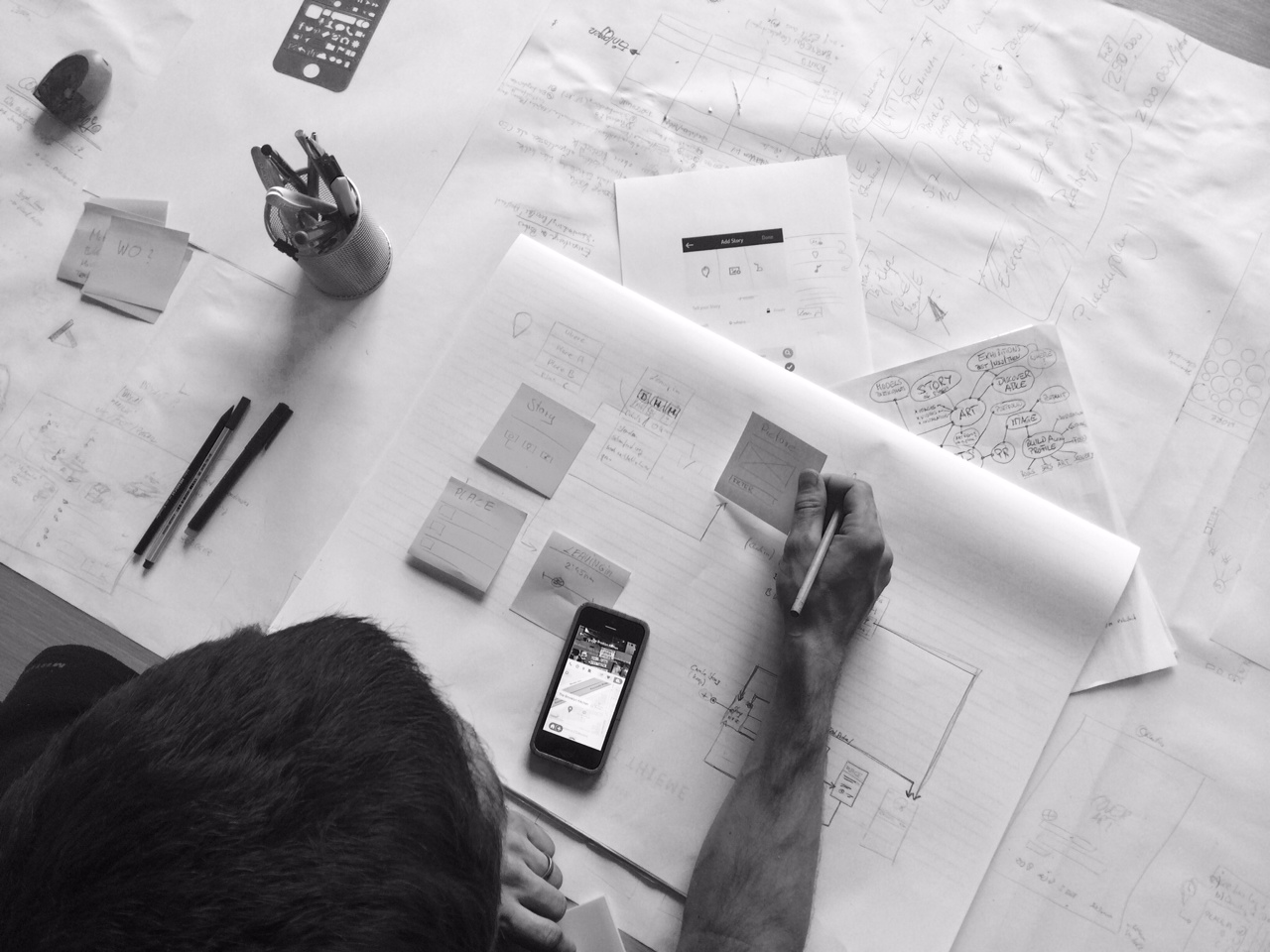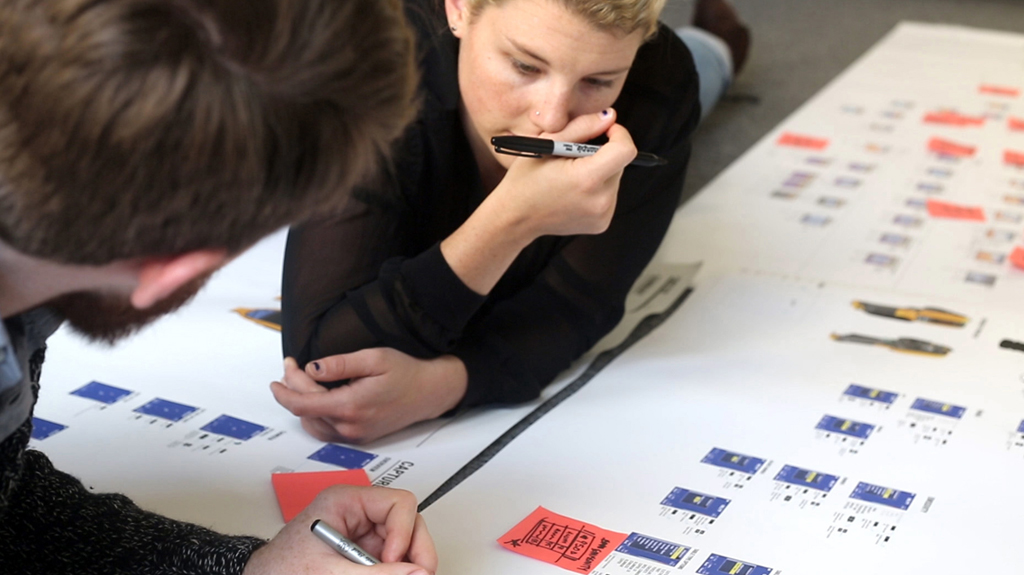
Of all the questions mobile app development companies get asked, “how long will it take?” is by far the hardest to answer. Because mobile apps differ so dramatically depending on platform, feature set, and backend complexity, timelines from idea to prototype to fully-featured app can be anywhere from a few weeks to a few months.
While we can’t give a concrete timeline without first considering what sort of features the business plan will require, we can offer you a snapshot of how the different elements of mobile app development affect time to market.
In this post we’ll guide you through the factors that have the biggest effect on how long it takes to develop a mobile app.
Understand: if an app is successful, development never really stops
There’s a common misconception that mobile apps are similar to a traditional product, following a similar trajectory: idea, execution, launch. Unfortunately, the reality is slightly more complicated — mobile app development is a story, but it’s not the kind that has a strict beginning, middle, and end.
Compared to other industries, the mobile market moves very quickly, with the result that most startups make substantial updates to their product both before and after launch. To make matters even more complicated, NYC mobile app developers often “pivot” the product or company entirely when users don’t respond to a product as expected, creating a related but separate offering that better matches the data collected from the failed launch.
This matters when you’re planning for development time because it becomes necessary to segment the timeline into a series of concrete deliverables. For example, a typical mobile app development phase will look something like this:
- Ideation
- Market research
- Prototype development
- Seed-round funding
- MVP (minimum viable product) development
- Beta launch
- Update, add features, or pivot
- Official launch
- Collect data for periodic updates
- Repeat process on other platforms
This is more complicated than simply having a great app idea and building it all at once, but it ultimately saves mobile developers an enormous amount of time and resources by staggering the development phase across several small, bite-sized chunks of time. Since each “deliverable” (prototype, MVP, etc.) functions to validate the idea, founders save time that might otherwise be spent developing features that won’t work in the wild. Concentrating on features that data supports as viable lowers costs and improves the consumer-facing product.
Prototypes vs. MVP vs. full-featured app

In most cases, startups will need to develop a minimally-functional prototype before moving on to developing the full-featured app. Prototypes are useful both as testing tools (think Google sprints), and as demonstration tools for getting investors on board. Because they are so simple, basic prototypes can be developed in as little as 2–4 weeks.
Once all the stakeholders are satisfied with the prototype, it’s time to start building out the MVP (minimum viable product). As the name suggests, MVPs pare down the app idea to the absolute minimum feature set required to viably function. MVPs are polished enough for beta testing and in some cases an official launch, so development time is much higher than a prototype even if the appearance of the app is the same. Creating an app that can handle real-world users on the backend is no easy feat, and getting through every phase from design to UX to UI to custom coding can take anywhere from 2 months to a year.
A fully-featured app that’s ready for public traffic on the Apple App Store takes longer even than an MVP, with a bare minimum of two months except in rare cases where the backend logic is extremely straightforward. On the upper end, some complex apps take as long as a year to complete.
Cross-platform compatibility
One of the bigger time sinks mobile app developers have to plan for is cross-platform compatibility. Most startups stagger their launches to keep production time reasonable — for example, launching in the Apple App Store, gathering data, then taking a few months to develop a separate Android app to launch later in the year.
While development frameworks and technologies like PhoneGap promise to save time by pushing the same codebase to multiple platforms, experienced developers know that these tools usually result in less-than-speedy interfaces. Apps developed with stock or multi-purpose code usually show it, and studies show that users don’t have the patience for lags and bugs. With over a thousand apps launched in the Apple App Store alone every day, mobile app users expect their apps to “just work” — and have no problem dropping those that don’t.
Users also have different expectations based on context, which is why you’ll notice subtle (but meaningful) differences between UI and UX within apps on Android and iOS. A lot of time is saved on UI and UX when “translating” an app from iOS to Android or vice-versa, but it’s important to consider making small changes to accompany the custom code powering the app.
Custom vs. “off-the-shelf” components
Mobile follows a strong set of unofficial conventions, and users expect repeat features like login, settings, and scrolling to be consistent between apps. It’s sometimes possible to shave time and money off development by re-purposing code from other projects (or purchasing it from a failed startup). This is absolutely appropriate during the prototyping phase, but we find that it can create more trouble than it solves when developing the final product.
Advanced & innovative features
Speed is important for startups, but the most successful mobile app developers don’t conquer the market by cutting corners. Apps like Tinder and Evernote depended on completely unique backend features (algorithms for matching dates, image search, etc.) to rise above the competition. The same is true for most sustainable mobile app startups — those who are willing to spend the time to develop something truly unique and innovative will always win out over those who cut corners and re-purpose existing features from competitors.
Prioritize quality over speed

As with everything in the fast-moving startup world, getting off the ground is a delicate balancing act between speed and quality.
Our advice: take your time to find a mobile app development company that understands your market and allow a generous timeline for beta development. If the timeline is too long to keep up with the competition, the only way to speed it up is to grow your team and put in late nights — do it without cutting corners, and you’re sure to be rewarded.





